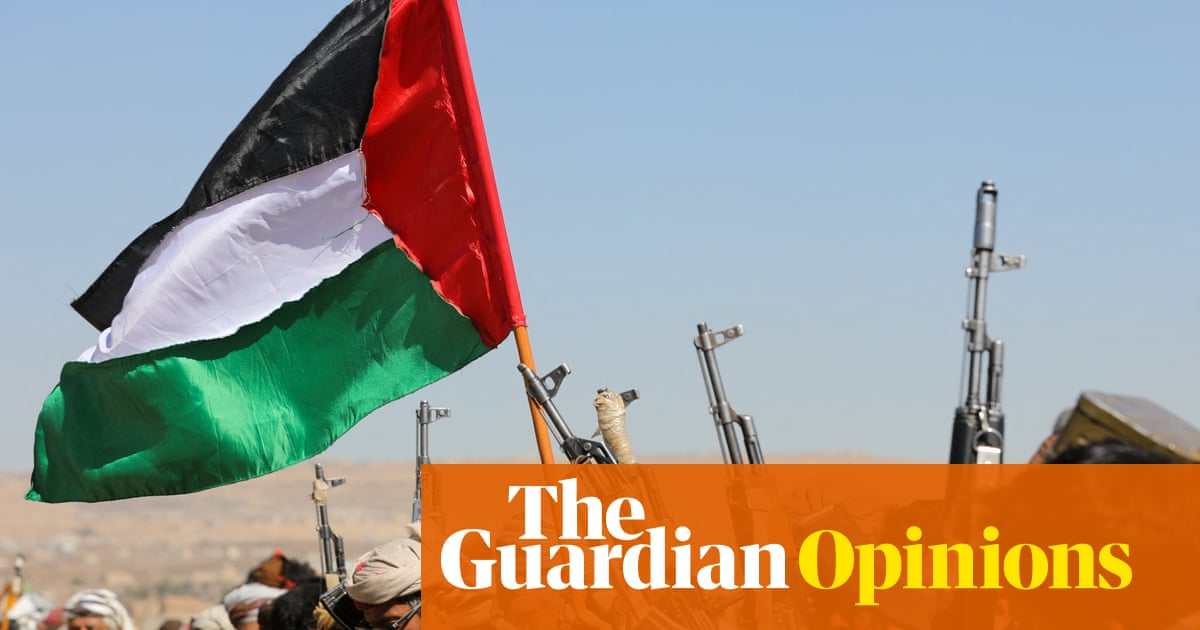
The war launched by the “axis of resistance” against Israel and the US marks the first time in history that a coalition of non-state actors has collectively come to the defence of another non-state actor, namely Hamas.
Spearheaded by Iran, the axis includes Syrian militias, the Palestinian groups Hamas and Islamic Jihad, Lebanon’s Hezbollah, Iraq’s Popular Mobilisation Units (PMU) and Yemen’s Houthis or, to give them their official name, Ansar Allah. For the past three months, the latter three have taken the initiative, launching attacks on Israeli and US targets in support of their Palestinian allies.
But rather than acknowledge these groups as having motives and interests of their own, the US, UK and Israel continue to reduce them to a transnational network of Iranian proxies whom they believe can be threatened and bombed into submission, a point made clear by yet another wave of overnight airstrikes. This is a fundamental misunderstanding of the underlying dynamics within the axis and of the unshakeable unity of its members, all of which could make western powers’ intervention in the region even more costly.
Unlike traditional western coalitions, which are created ad hoc by like-minded states to fight a common threat without any long-term commitments, the axis of resistance began as an enduring alliance that developed into a wartime coalition. Since its inception, what bound the core members together was the mutual provision of military and political support to confront Israel. While Iran furnished Hezbollah, Hamas and other Palestinian groups with longstanding military and financial assistance, Syria offered its territory as a secure supply route for Hezbollah and as a safe refuge for Hamas’s leaders. For its part, Hezbollah provided technical and military training to Hamas, including bomb and tunnel-making expertise, and along with Iran, smuggled weapon-manufacturing technology to the West Bank and Gaza.
In 2013 the axis formed its first wartime coalition, in support of the Syrian state. Hezbollah officially intervened in that war and persuaded Iran to deploy its Revolutionary Guards to Syria, while the newly formed PMU followed suit, further expanding the axis.
Alongside the coalition’s role in Syria, Iran and Hezbollah directly intervened in Iraq in 2014 to assist the PMU in fighting Islamic State. The final addition to the axis were the Houthis, who received military and political assistance from Iran and, according to some reports, military training from Hezbollah, in their war with a Saudi-led coalition that started in 2015.
What makes the axis such a cohesive and durable alliance is its deep-seated ideological pillars and shared strategic objectives. All its actors subscribe to an anti-imperialist and anti-Zionist agenda, with the Palestinian cause as the focal point. Today, it shares two common aims: to force Israel into an unconditional ceasefire in Gaza, and to expel US troops from Iraq and Syria.
In pursuing these aims, the non-state actors in this alliance are acting in accordance with their own political beliefs and strategic interests rather than following Iranian diktat. While Iran has offered material support to the non-state actors within the axis, such assistance has not translated into the kind of exercise of power that characterises sponsor-proxy relationships. This view is shared by the US intelligence official Brian Katz, who has argued that Iran’s non-state allies “are no longer simply Iranian proxies. Rather, they have become a collection of ideologically aligned, militarily interdependent, mature political-military actors committed to mutual defence”. In essence, the nature of this alliance is organic and symbiotic, as opposed to transactional and hierarchical.
This was most recently demonstrated by Hamas’s surprise 7 October attack on Israel of which, according to Israeli and US accounts, Iran had no foreknowledge. Having said that, there does appear to have been a pre-planned “forward defence” strategy whereby Hezbollah, the Houthis and PMU groups would take the offensive and initiate strikes against Israel and the US should Hamas require such assistance. This strategy is being executed today by means of tactical military coordination, which is reportedly occurring within several joint operations’ rooms in various capitals across the region.
Within this strategy, Hezbollah assumes the role of battle management whereby it directs, plans and coordinates military operations across the different conflict theatres. Three battle arenas outside Gaza are being fought in sync: Hezbollah’s moderate-intensity war with Israel, the PMU’s attacks on US and Israeli targets in Syria, Iraq and Israel itself, and the Houthis’ attacks on cargo ships in the Red Sea and occasional strikes on Israel. All fronts are synchronised to pause when the fighting in Gaza is suspended, as demonstrated by the temporary truce in Gaza in late November.
An alliance characterised by such a high level of coordination, reflecting a unity of purpose and vision requires the US and its allies to radically alter their approach to this conflict. The assumption that “sustained” military action against these actors will break their will to continue fighting is as misguided as it is dangerous. On the contrary, military solutions that expand the scope of the conflict will only invite more coordinated responses from across the axis. Western leaders would do well to reflect on the reality that they are not merely trying to protect shipping routes, but are waging an unwinnable war on an ideologically united and tenacious alliance of powerful non-state actors.
The US and UK strikes on Yemen have only increased the prospects of a full-blown regional war, given that the Houthis have now threatened to widen the scope of their campaign to include “all US and UK interests” in the region. Yet the Lebanese-Israeli front remains the most flammable, considering that Israel is champing at the bit for a war with Hezbollah. As the latter is the most powerful non-state actor in the axis of resistance, if not the world, such a war would be the most far-reaching and mutually destructive. Nothing short of a ceasefire in Gaza can prevent the region from turning into a powder keg.
Amal Saad is a lecturer in politics and international relations at Cardiff University











